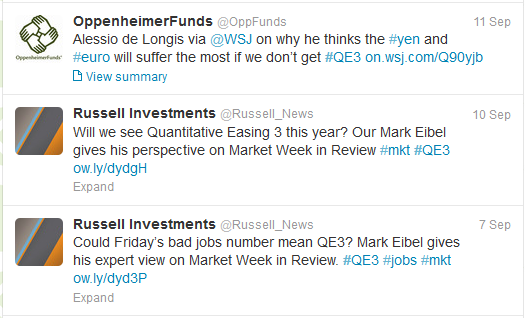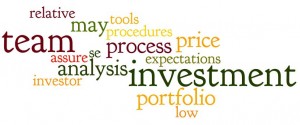How Did Asset Managers Respond to QE3?
It’s almost old news by now. Yesterday, the Fed announced QE3 and ongoing purchases of mortgage-backed securities at the rate of $40B per month. So, how did asset managers respond?
Using Twitter as an (incomplete) proxy for firms’ responses, here’s the short, chronological list of activity as of 5pm on the day of the news:
- Janus gives a 140-character critique of the Fed. No further analysis as of yet, but a responsive opinion.
- Direxion tweets some specifics to traders.
- iShares establishes its point-of-view by calling the buying program “aggressive” and links to a news story from Reuters.
- Virtus ties the Fed’s move to senior floating rate debt and links to an ultra-concise blog post.
- In the #AskMcNabb Twitter Q&A, Vanguard’s Bill McNabb notes that he is not favor of QE3 due to excessive long-term risks. (Note that the questioner also asked how much Mr. McNabb can bench press. Unfortunately, no insight was given.)
- PIMCO links to Mohamed El-Erian’s thoughts on FT.com. Bonus points for being the first long-form response; a slight ding for requiring an extra click to get to the content.
That is six responses within about six hours. As a sidebar, it’s interesting that none of the content referenced any of trending conversations on Twitter (#QE3, #Fed, etc.). Per the screen capture below, a search showed Oppenheimer and Russell taking advantage of Twitter’s social features. But these were from before the Fed’s announcement.
I don’t know exactly what I expected when I started to look, but overall I’d characterize the volume as a bit disappointing. The biggest financial news of the week warranted a bigger, faster response. Firms know that; it’s still a matter of getting the process ironed out.







